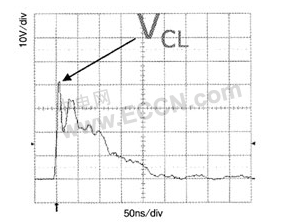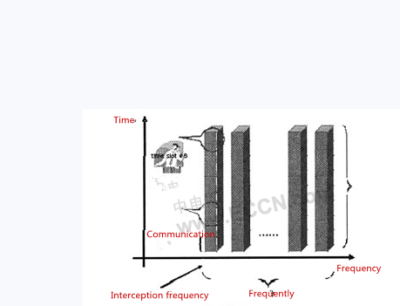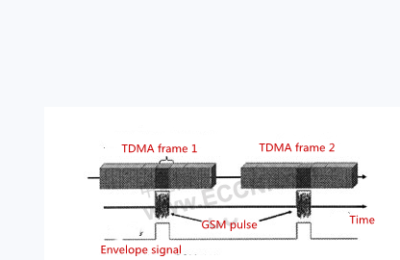This article briefly explores the causes and consequences of ESD and EMI in mobile audio systems. It then discusses the use of ESD suppressors and EMI filters to mitigate these threats. Finally, it compares three current solutions. Modern materials and technologies have led to the frequent occurrence of electrostatic discharge (ESD) and electromagnetic interference (EMI), which pose significant risks. Our clothing and the objects we come into contact with can generate static electricity. Digital technology also generates electromagnetic interference. ESD can damage electronic components in mobile phones. While phones are easily replaceable, they can cause significant harm to users. Phone circuit designers must ensure that necessary measures are taken to eliminate ESD damage.
EMI in audio circuits can result in poor sound quality, with audible issues such as hisses, pops, and hums. Mobile phone users cannot tolerate such interference. Therefore, efforts must be made to filter out EMI in audio circuits.
We have all experienced the effects of static electricity. We have witnessed it in lightning since our prehistoric days as cave dwellers. It remains a significant threat today and is ubiquitous. When combing our hair with a plastic comb, we can observe the generation of static charges. If you bring your arm close to a television screen, you can see the hairs on your arm stand up. This is also an example of the static electricity effect.
When you open a car door and step out, you might experience a shock, which comes from static discharge. As homes and workplaces become increasingly filled with electrical appliances, static electricity becomes a constant danger. People involved in manufacturing or repairing electrical equipment protect themselves and their work equipment by grounding themselves, preventing injuries caused by static discharges from electrical equipment.
We can see lightning strike buildings and trees, demonstrating its destructive power. Even small discharges can damage sensitive electronic circuits if the ESD protection is not optimal. Mobile phones have a certain level of ESD protection. External connections to audio circuits are the most common source of ESD. Simply plugging in headphones or speakers can potentially expose the phone to ESD.
Like all products, mobile phones must be tested for ESD according to IEC 61000-4-2 regulations. The regulation specifies that a phone should withstand 15 kV of air discharge (through a 330Ω/150 pF network), which is approximately equivalent to a current of 45 A lasting for at least 1 nanosecond. In this scenario, the phone should continue working without being damaged. This comparison refers to a high-energy pulse and the ESD human-body model experiment. Additional ESD protection must be added at each potential ESD entry point to protect the main chip. In general, devices for ESD suppression generate controllable outputs known as clamping voltages.

The figure below shows the output (clamp voltage) of the ESD protection device in an ESD event.

Output of ESD Protective Equipment
When current flows, a magnetic field is produced around a conductor. When the current changes, the magnetic field also changes. Therefore, simply switching on/off the current can cause changes in the magnetic field. These changes in the magnetic field can induce signals in nearby conductors. These are the basic principles of electricity.
Both household and industrial electricity use AC current with frequencies of 50Hz or 60Hz. These frequencies fall within the audible range. As the current continuously changes, nearby conductors with the same frequency can produce signals. If you have ever used a Hi-Fi system with separate players and amplifiers, and if their chassis are not connected together, you may hear a humming sound.
Now, let’s consider the constantly changing signals in today’s electronic world:
– Input/output of audio devices can generate EMI through radiation and conduction, which then emit higher frequency radio frequency signals, leading to signal distortion.
– Mobile phone antennas (TDMA pulses) emit radio frequency signals, which can be received by long-wired headphones, causing EMI noise in the audio signal path.
GSM (Global System for Mobile Communications) uses frequency division multiple access and time division multiple access to simultaneously transmit numerous phone calls, as shown in the diagram below.

GSM mobile phone FD-TDMA radio communication equipment
Specific mobile phones only launch at the time that belongs to it. The basic frequency of the package signal is 1 / 4.615 ms = 217Hz. Harmony frequency is 434Hz, 651Hz, etc. This frequency can be heard. As shown in the figure below, the package signal of the mobile phone.

Envelope signal and GSM pulse
When the mobile phone communicates with the base station, or the two mobile phones are close to each other, the transmitting pulse passes through the audio channel through the amplifier, the speaker, or the headset headset wire. As a result, the audio quality decreased significantly.
EMI filters should be as close as possible to the point where EMI interference enters, in order to ensure audio quality to the greatest extent possible.
The choice of filters should be based on their bandwidth, cutoff frequency, and stopband attenuation characteristics. Another factor in creating high-quality sound is total harmonic distortion (THD). Poor THD can destroy the sound quality of an otherwise excellent audio system. Ideally, the THD value of EMI filters should be better than that of the weakest signal chain.
Representative characteristics include:
• Stopband attenuation of at least -25 dB for the frequency band of 800-2480 MHz
• Stopband attenuation of at least -20 dB for the frequency band of 10-800 MHz
• MIC line with THD+N (0.03%) not less than -70 dB(A), providing high-quality audio.
Consider circuit board space
Mobile phones are incorporating more and more multimedia functions, such as GPS, MP3, FM, Bluetooth, and DVB-H. These functions require additional circuit board space. Designers must make space for ESD and EMI solutions.
This solution utilizes 24 discrete components to form an ESD suppressor and EMI filter. However, this solution is not optimized as the cost and reliability are limited by the 24 discrete components.
The LTCC EMI filter can effectively meet the filtering requirements. However, the varistor has a high clamping voltage (maximum VCL > 100V), which does not provide optimized protection for sensitive sub-micron chip ESD.
This technology combines protection diodes and passive components, such as resistors and high-density capacitors, in integrated circuits like silicon chips. Compared to the previous two solutions, the advantages of the IPAD solution are as follows:
• It can fulfill all ESD suppression and EMI filtering requirements.
• It can save a significant amount of circuit board space (approximately 78%).
• Using natural silicon devices, it provides more significant reliability and lower operating costs.
This article introduces the causes and potential consequences of ESD and EMI in mobile audio interfaces, and briefly discusses the requirements for ESD suppression and EMI filtering.
Comparing the available integrated ESD protection and EMI filtering solutions, it can provide the best ESD protection (lowest VCL) and the best stopband attenuation, as well as other favorable conditions such as improved reliability and lower operating costs.
Tags:ESD61000-2Your email address will not be published. Required fields are marked *